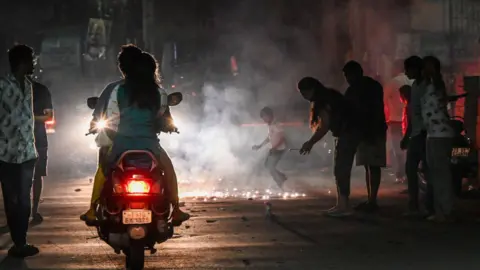
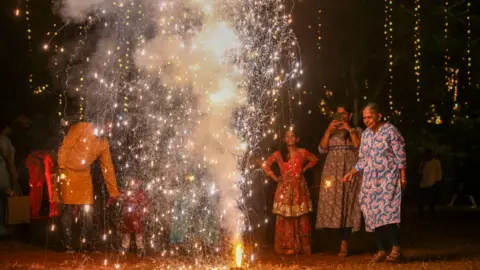
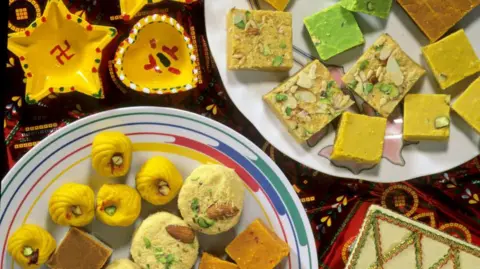
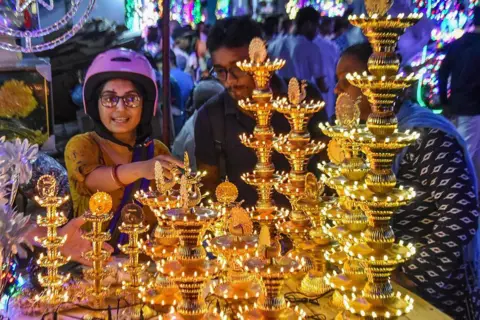
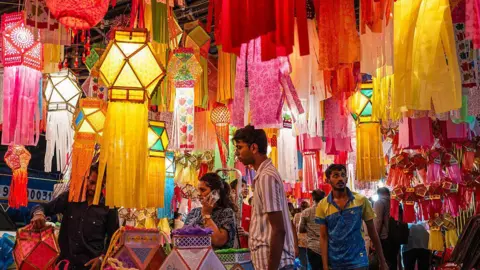
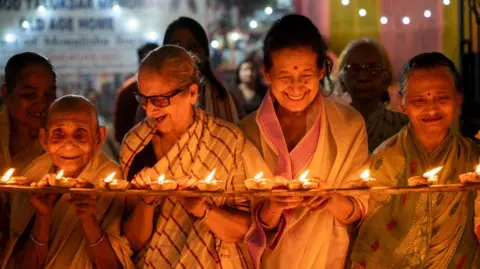
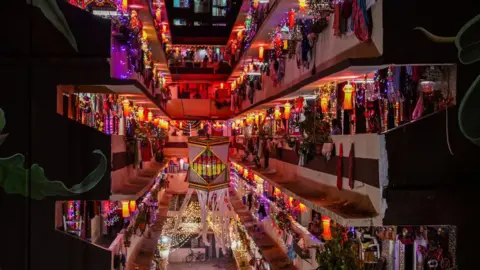

Millions of Indians are celebrating Diwali, the festival of lights, one of Hinduism’s most significant and widely observed festivals.
Lamps and firecrackers light up homes and streets during the festival, also observed by Sikhs and Jains, but they also worsen air pollution – a problem especially pronounced in northern India, where winter already brings poor air quality.
This year, the Supreme Court has permitted the sale and use of “green crackers” in the capital, Delhi, to help curb air pollution, ending a ban on crackers that has been in place since 2020.
“Green crackers” claim to emit 20–30% less pollution than traditional firecrackers, but critics doubt their actual effectiveness in protecting the environment.
In recent years, several states have restricted or banned firecrackers to combat rising air pollution, but the rules are often flouted, further worsening air quality in the days after Diwali.
 Getty Images
Getty Images Reuters
Reuters Getty Images
Getty ImagesBut Diwali is about much more than fireworks. Food plays a central role in the celebrations.
Families prepare a variety of traditional Indian sweets which are shared with friends and neighbors. Festive meals often include rich curries, savory snacks, and special breads.
In the days leading up to the festival, people clean and decorate their homes, shop for new clothes, and buy traditional sweets to exchange as gifts with friends and family.
Many also create traditional and colorful rangoli designs outside their doors to invite luck and positivity. On Diwali itself, families worship Lakshmi, the Hindu goddess of wealth.
Diwali’s appeal goes beyond religion, drawing people from different communities and faiths to join in the celebrations.
Across India’s cities and towns, markets bustle with shoppers buying sweets, gifts, decorations, and firecrackers, giving a significant boost to the economy each year.
 Debarchan Chatterjee/NurPhoto via Getty Images
Debarchan Chatterjee/NurPhoto via Getty Images Getty Images
Getty Images Getty Images
Getty Images Getty Images
Getty ImagesSource link
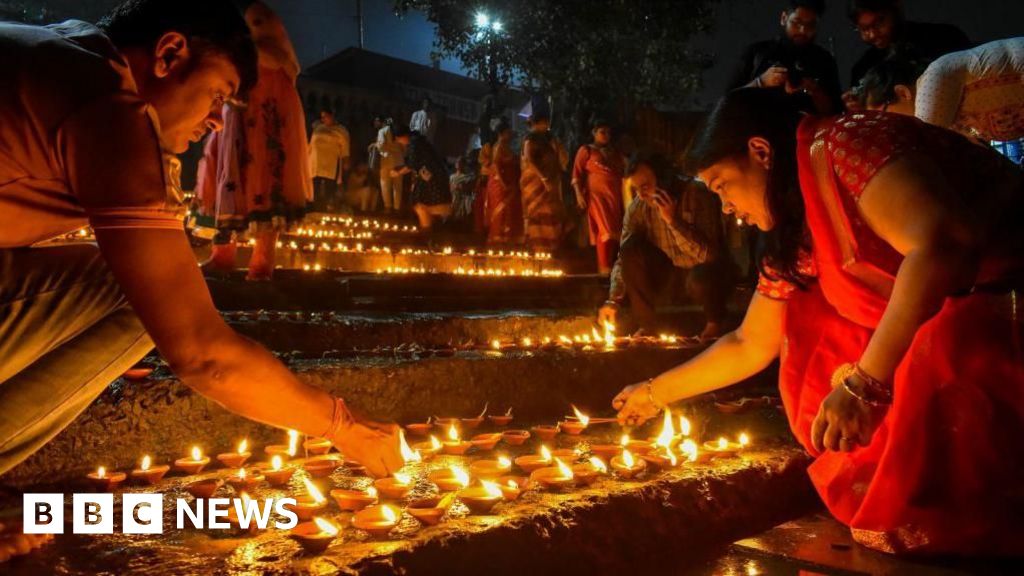
اترك تعليقاً